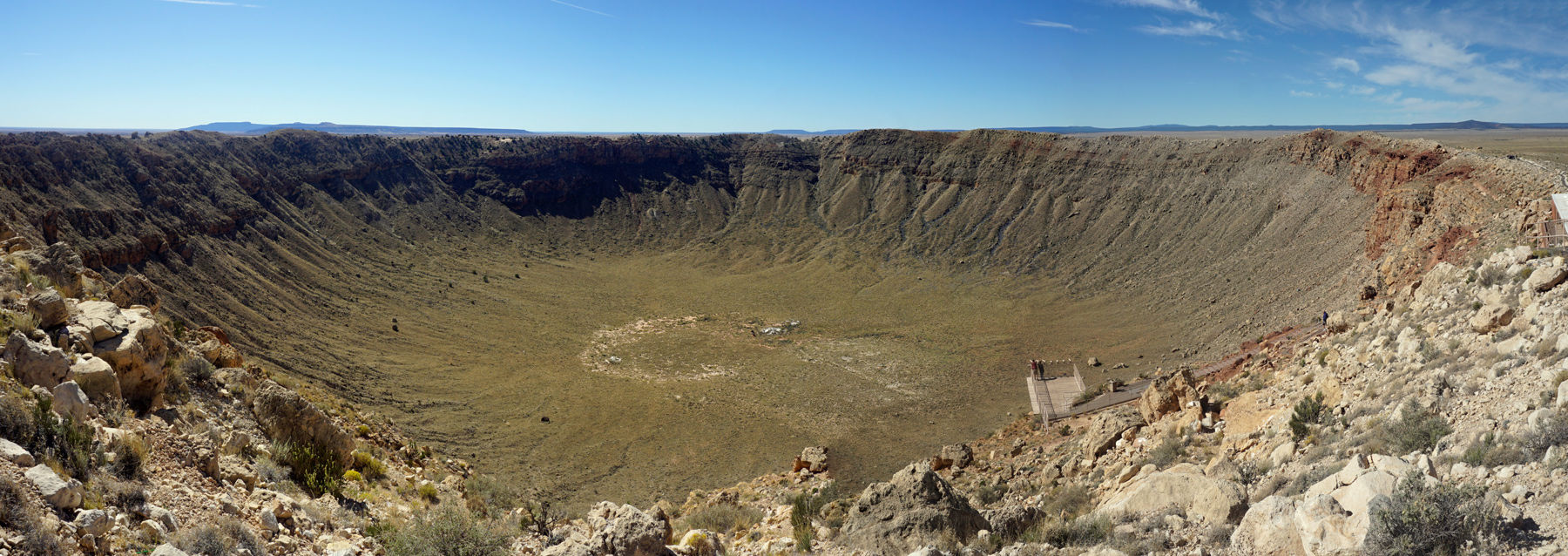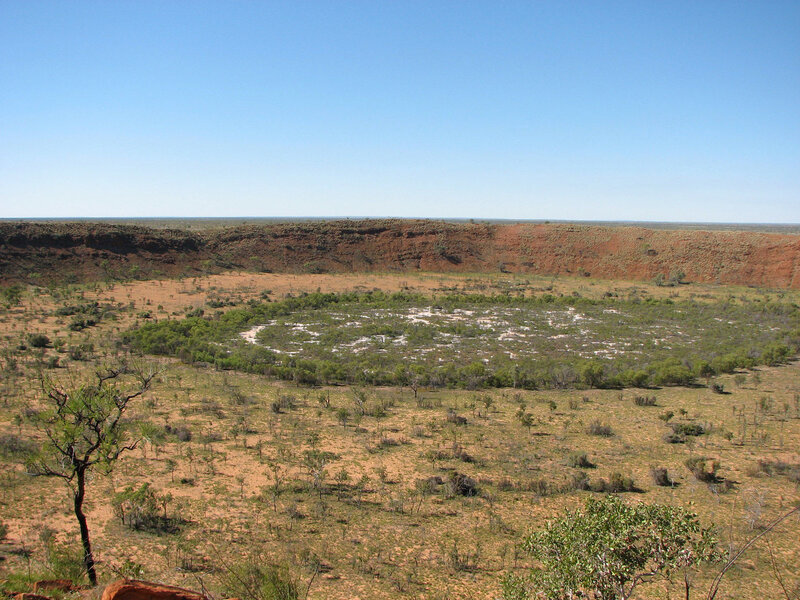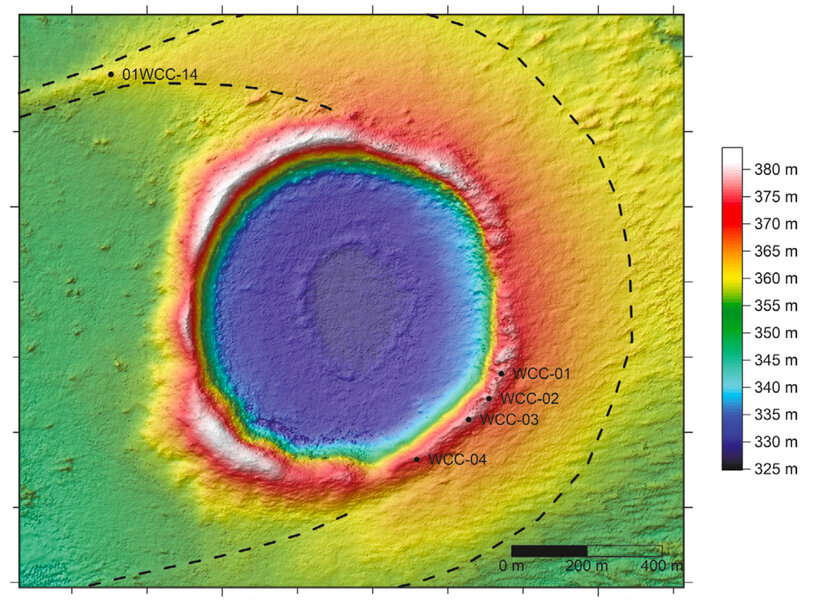Create a free profile to get unlimited access to exclusive videos, sweepstakes, and more!
Dating craters: Wolfe Creek is younger, Meteor Crater older, than previously thought

How old are impact craters on Earth?
This is a hard question to answer, for a lot of reasons. For one thing, big impacts are rare, so craters don't get made very often. That's a good thing! But it means we don't have lots of examples, so it can be difficult to work with them.
For another, Earth is an active planet. Air, water, tectonics... these are all sources of erosion, and after a few hundred thousand — or hundred million — years, craters fade away. If it weren't for those factors, the surface of the Earth would look like the surface of the Moon, saturated with craters.
Nonetheless we do have some techniques to get absolute ages for craters (as opposed to relative, where you can say this crater is older than that one). But even then it can be tricky to get good numbers.
Cases in point: Two of the youngest, large-ish, and well-preserved craters on Earth have just been re-evaluated, and the ages we thought they were are most likely off. Wolfe Creek crater in Australia is younger than thought, and the iconic Meteor Crater in Arizona is older.
Wolfe Creek crater is in western Australia, in the edge of a large sandy desert. It's about 900 meter across, though shallow; clearly over time the desert has filled in the floor with sand and dust. It formed from the impact of a nickel-iron asteroid about 15 meters across; the resultant explosion had the yield of a half-megaton bomb (about the same yield as the Chelyabinsk asteroid, though that one was made of crumbly rock, which is why it didn't survive to hit the ground). An unpublished (but widely known) estimate of its age puts it at 300,000 years old. This was based on few different things, including meteorites found near the site. But it turns out those meteorites might not be from that impact event! So that age is suspect.
A team of scientists decided to take a more direct approach. They got samples of rocks around the crater, and looked at the amount of two very specific elemental isotopes in them: beryllium-10 and aluminum-26. 10Be is created when cosmic rays (high-speed subatomic particles from space) slam into our air, turning nitrogen and oxygen into beryllium. 10Be is radioactive, and decays into boron-10, so you can get the age of a sample by looking at how much of it there is compared to boron-10. 26Al is created by cosmic rays hitting silicon, and decays to magnesium-26; dating a sample works the same way as with 10Be.
The idea here is that the impact that formed Wolfe Creek crater overturned deeply buried rock, un-burying it and exposing it to the slow accumulation of meteoric material. The longer it's exposed, the more stuff it picks up, and this can be seen by the abundances of the elements mentioned above. The team took samples from the crater and found an age of 86,000–128,000 years. This relatively large range is probably due to inherently different erosion rates around the crater as opposed to statistical issues in the samples themselves.
They also used another technique called optically stimulated luminescence, which is a little bit complicated. Basically, quartz sitting beneath the Earth's surface gets exposed to natural radiation. This excites electrons in the atoms, which get trapped in the crystal structure. When exposed to light these electrons are freed, but since it's dark underground (I mean, duh) they stay frozen. Samples can be dug up and then exposed to light in the lab; the electrons emit very specific wavelengths of light when that happens, allowing scientists to see how many electrons were trapped this way. The longer the sample is underground, the more electrons it has in this state, so it's possible to determine how long the sample was buried.
Again, applying this to sample from Wolfe Creek, the scientists determined an age of 120,000–137,000 years. Combining these results with that from the radiation decay estimates, and also looking at the structure of the crater itself, they estimate the age of Wolfe Creek crater to be 120,000 ±9,000 years. That's much younger than previously thought.
Given that, the team decided to take look at the dating techniques that have been used to determine the age of Meteor Crater, a short drive from Winslow Arizona*. It's bigger than Wolfe Creek, about 1.2 kilometers across. The age you usually hear for it, about 50,000 years, is based on the 10Be and 26Al method, but this was calculated when the technique was new. Since then there have been improvements to the method (and to such numbers as the half-life of the decay of 10Be). Redoing the numbers, the scientists find that Meteor Crater is about 61,100 ±4,800 years old, about 20% older than previously thought.
So why is this important? As you might suspect, scientists are very interested in knowing how often impacts occur, especially ones big enough to carve a crater in Earth's surface. Looking at just Australia, and using the new date for Wolfe Creek, they find that Australia alone gets a crater-producing impact about once every 17,000 years (they found 7 in the past 120,000 years). Given Australia's size and erosion rate compared to the rest of the planet, they find that the Earth gets an impact large enough to make a crater once every 200 years or so.
That's roughly in line with previous estimates. I know it sounds little a terrifying, but you need to remember some salient facts. One is that the Earth is 70% covered with water, so one hitting land and making a crater happens about 1/3rd the time. Also, there's the Arctic and Antarctic to consider, as well vast stretches of land all over the planet where few or no people live. This makes these impacts near people fairly rare.
So as usual, this is a threat to think about, but not one to panic about. In the long run, though, we do need to take it seriously, and astronomers are. We have plans for observatories to find these objects, and ideas in the works to prevent them from hitting us. Right now there's not much we can do about ones this small (ones bigger than 140 meters wide are the goal right now, and these ones would be 10–20 meters), but as our methods improve with time I'm hopeful smaller and smaller threats can be mitigated.
*Take it easy. #obligatory

















